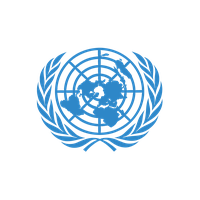
World Humanitarian Day
Taking place on 19th August every year.
Recognizing and appreciating humanitarian workers worldwide.
About the event
On 11 December 2008, the United Nations General Assembly decided to designate the 19th of August as World Humanitarian Day (WHD). It marks the day in 2003 which the then Special Representative of the Secretary-General to Iraq, Sérgio Vieira de Mello and 21 of his colleagues were killed by a suicide bombing at the UN Headquarters in Baghdad. The Day gives special recognition to all humanitarian, UN and other personnel who have worked in the promotion of the humanitarian cause, and commemorates those of them who have lost their lives in the cause of duty.
How to approach it
This is a good opportunity to introduce or reinforce the concept of humanitarian aid amongst your students. Start with the name itself. Humanitarianism roughly means, the care for others, and more specifically, humanitarian aid is the act of supporting people in times of hardship. Ask your class if they can think of any examples of when humanitarian aid is needed. Famines, war, epidemics or natural disasters are all good examples. You could also show examples of aid organisations such as the Red Cross, the Red Crescent, the UN, Oxfam or Save the Children.
Next, encourage your students to think through the values required for humanitarianism. There are two key things to think about here: care and sacrifice. First, discuss with students why it is good to care for people. You could begin by talking about friends or family and then expand this focus to strangers, even people who live very far away. Ask: what are the benefits for others? What are the benefits for ourselves? What is better about a caring world than a non-caring world? In terms of sacrifice, you could take some real word examples of humanitarian workers (such as de Mello in Iraq) and show the incredible work they do. Ask: why do these people work so hard for others? Through this, introduce an appreciation for the sacrifice of humanitarian workers and, importantly, an understanding that there is so much joy and purpose in helping others.
Finally, it is useful to introduce a critical perspective to humanitarian work. Humanitarian aid is vital in many circumstances, but there are some instances in which it can exacerbate the divisions between rich and poor. One example of this is when excessive clothes or food shipments are given to poor countries. This can harm their local industries and farmers (because this reduces demand for their products) and further entrench local poverty. Another example is the botched relief effort of Hurricane Katrina in New Orleans that saw military contractors harass survivors, discriminate against black people and evict working class people from their homes. Ask your class: what is good humanitarianism and what is bad? What are ways that can seem helpful but, long term, are not? Show students that aid and caring for others has to come in the right way.
Organised by
United Nations

Conversation starter
A humanitarian is someone who helps others. This day celebrates humanitarians - especially those who put themselves into dangerous situations to protect other people. Science shows that the more time, energy and love we give to others, the better we feel and the more we get in return. In what ways can you help other people today?




